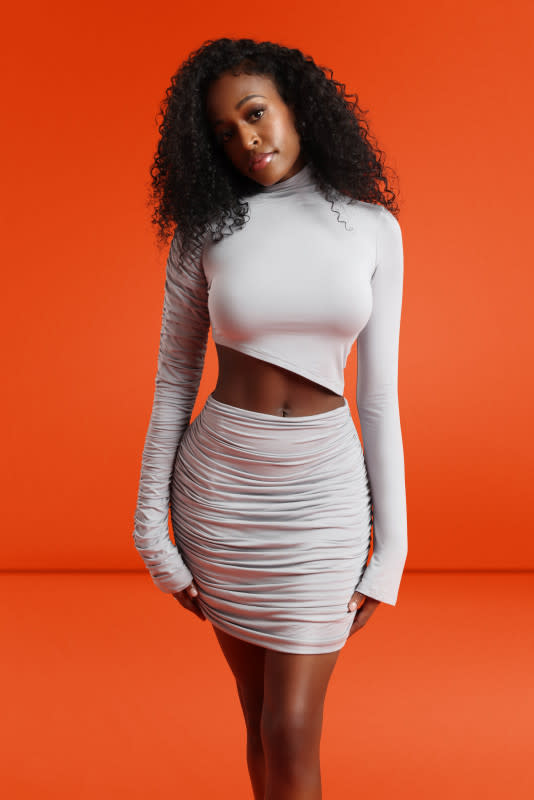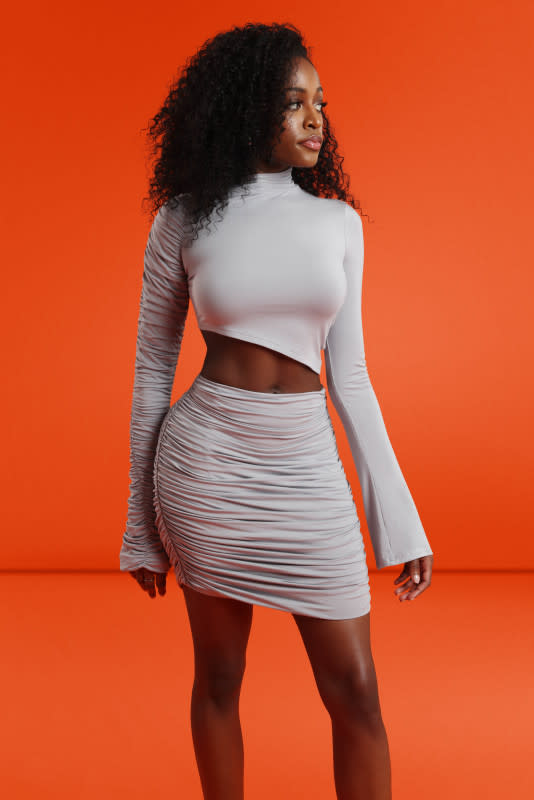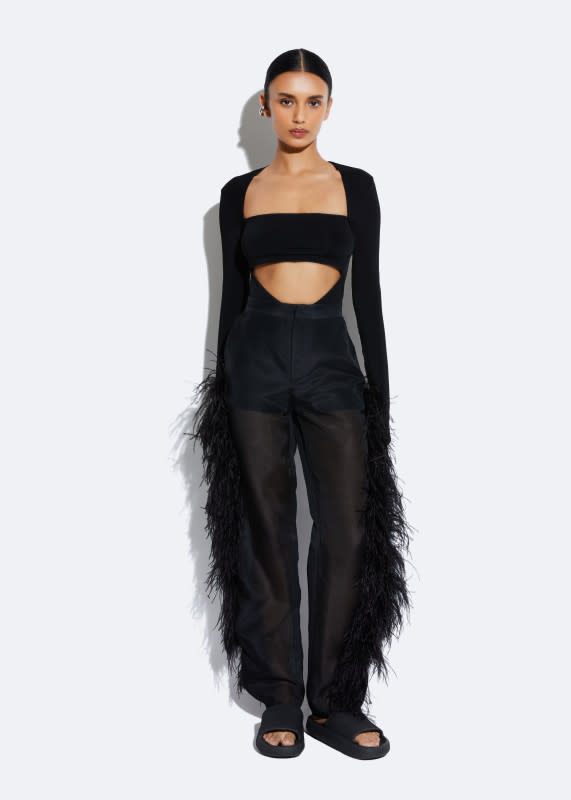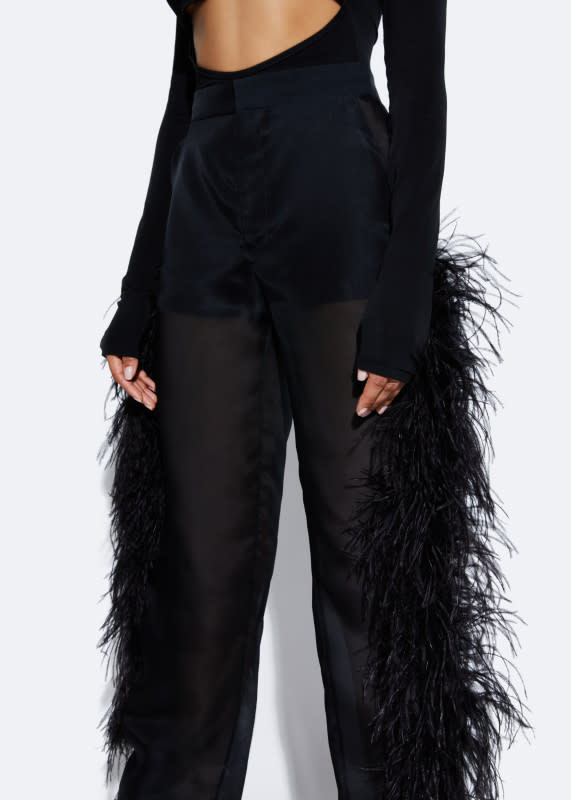Why Designer Brands Are Going Basic
Fashion has long feared being boring. It's one of the fundamental principles of this industry: Innovation must always triumph over sameness, if only to distinguish high fashion from mass retail. Yet, when it comes to ready-to-wear labels, this distinction isn't so clear anymore. Instead, designers are going basic — on purpose.
This past New York Fashion Week, Luar and Tanner Fletcher — both labels with distinguishable aesthetics that make their customers more of a clique than random shoppers — signaled their entrance into the world of "basics." Designer Raúl López, for example, made "Luar Basics," a forthcoming lineup of seasonless essential pieces, a hallmark of his Fall 2024 show. (Yes, the same one where Beyoncé rolled up in actual couture.) Tanner Fletcher showed more tamed looks, including collared blouses and knitted cardigans, for Fall 2024.
This emphasis on creating core pieces is an attempt to reverse-engineer a 360-degree wardrobe for customers, a strategy that other designers like Sandy Liang, Hanifa and LaPointe have also bet on lately. It's become a key ingredient in building their individual aesthetic worlds, and each brand is defining what "basic" means on their own terms.
"Customers love to see offerings that can be worn on a more regular basis from their favorite designers," says Caroline Maguire, fashion director at Shopbop. "The trust and connection to the brand is already there, so it's nice to be able to incorporate coveted brands into the day-to-day wardrobe."
This mindset pushed Anifa Mvuemba to release Hanifa's Comfort capsule — which debuted with an array of stretch jersey dresses, flared sweatpants and voluminous sweatshirts — back in 2023. "I wanted to make it possible to always shop the brand, even for a closet basic like sweatpants or a T-shirt," she says.

Photo: Juan Veloz/Courtesy of Hanifa

Photo: Juan Veloz/Courtesy of Hanifa
Hanifa dropped a second Comfort collection earlier this year. While the brand may be known for its colorful, bold dresses and sculptural tops, the Comfort capsules take on a more minimalistic approach, with monochrome palettes and more streamlined silhouettes that still compliment the brand's regular line: "The goal would be for people to be able to mix and match with what they already have," Mvuemba says.
Sally LaPointe sees her namesake brand's Essentials capsule, released in March 2024, in a similar light. Its signature downtown party girl aesthetic — which Lapointe has cemented via bias-cut gowns, structured blazers and bold color palettes — is still sprinkled through this collection of more wearable pieces, like cut-out bodysuits, feathered turtlenecks and satin blouses, all in black and white.
"I want the Lapointe woman to effortlessly transition her wardrobe from day to night," the designer says. "We're here to show out with bold colors and statement pieces, but that doesn't mean every 'fit needs to be red-carpet-ready."

Photo: Courtesy of Lapointe

Photo: Courtesy of Lapointe
It's worth noting that this transition to core pieces is happening at a time when "wearability" is one of fashion's biggest buzzwords, as labels like Proenza Schouler, Khaite and Tibi succeed by providing everyday essentials that aren't as basic as they look. It's also a time of great sartorial confusion, propelled by the in-between dressing that has defined everyday life amid the pandemic.
"I think consumers want easy dressing with a twist," says Maguire. "Having essentials available allows customers to round out their wardrobes in a more streamlined way, making it easy to score a beautiful designer dress but also add the perfect white tee to cart that can be worn underneath that dress."
While to an outsider, it might seem like a basics boom, designer Fletcher Kassell, co-founder of Tanner Fletcher, says it's been a focus for the brand since its inception: "We always knew that we wanted to create our version of basics that you always keep around in your closet and you wear with every outfit," pointing to the brand's cotton poplin shirts, which boast its signature bows, as a "uniform" for its customers.
A massive bow on a cotton poplin shirt is not exactly what one thinks of when looking for "basics," yet Kassell argues that it's the type of core piece that feels authentic for the brand. The more basic basics, like T-shirts, haven't proved as successful for Tanner Fletcher.
"The way we were doing it just didn't feel authentic and then we also noticed that the customer wasn't buying it because they're coming to us for the special pieces," says Kassell. "I think if we're introducing T-shirts and more affordable items, that has to come from a really authentic place. It still has to have those fine details in it."
Instead of making core essentials for a wide market, Kassell says the brand is now focusing on defining what makes a Tanner Fletcher basic, and consequently, the brand's uniform: "I think, as the seasons go on, we'll have a much larger selection, and it will become more and more solid, so our customers can really buy the uniform."
In an era defined by niche aesthetics, it's not surprising to see designers — even indie darlings — expand their sartorial world by giving their customers more ways to subscribe to their uniform. As more ready-to-wear labels jump on the basics train, the consensus is that simply watering down a brand's identity for accessibility isn't good business. We can all be basic in our own way.
Never miss the latest fashion industry news. Sign up for the Fashionista daily newsletter.
